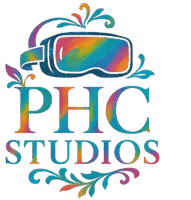Where VR becomes powerful for grant writing is in storytelling, data presentation, and impact demonstration, which can make a nonprofit’s proposal stand out and be more compelling to funders. Here’s how:
⸻
1. Immersive Storytelling for Funders
• VR can let funders “step into” the nonprofit’s mission—seeing the community, environment, or issue being addressed firsthand.
• Example: A housing nonprofit could let grant reviewers virtually tour a before-and-after renovation of homes.
• For medical nonprofits, VR could simulate what a cancer patient or child with autism experiences, building empathy and urgency.
⸻
2. Demonstrating Impact in 3D
• Instead of static charts, VR can show:
• A virtual timeline of program growth
• Interactive maps of impact zones
• Walkthroughs of project sites
• This helps funders feel the transformation rather than just read about it.
⸻
3. Training Grant Writers & Teams
• VR can simulate grant review panels, teaching nonprofits how reviewers evaluate proposals.
• It can walk teams through interactive grant-writing workshops without requiring travel.
• Scenario-based training could teach staff how to pitch projects in high-pressure funding interviews.
⸻
4. Engaging Stakeholders Before Submission
• Potential partners and community leaders can explore your work virtually, giving them a stronger basis for providing letters of support.
• Funders who can’t visit your site physically can still have an immersive “site visit” through VR.
⸻
5. Standing Out in a Competitive Grant Landscape
• Many grant reviewers see hundreds of similar applications. Including an optional VR component (e.g., link or headset experience) can make your proposal memorable.
• Example: Instead of attaching 10 photos of a youth program, send a 3-minute VR highlight reel.
⸻
Real-world example:
In 2024, a few environmental nonprofits began using VR to show endangered habitats to foundations, resulting in increased grant awards because reviewers experienced the urgency firsthand.
Patricia Haley Charity – VR Grant Funding Toolkit
Part 1 – Proposal Language (Insert into Your Grants)
This is wording you can drop directly into the “Need Statement,” “Project Description,” or “Innovation” sections of a grant.
⸻
Innovative Use of Virtual Reality to Advance Our Mission
Patricia Haley Charity is committed to harnessing the latest technology to enhance service delivery, donor engagement, and program transparency. Through immersive Virtual Reality (VR) experiences, we allow funders, stakeholders, and community partners to experience our work firsthand—without leaving their offices.
Our VR platform provides:
• Immersive Site Visits – Grant reviewers can virtually “walk through” our service locations and see the real-world conditions our patients and families face.
• Impact Storytelling – Interactive, 360-degree videos of families receiving assistance, narrated by staff, bring our mission to life in a way no written report can.
• Before & After Demonstrations – VR allows funders to see transformations over time, such as a family’s journey from crisis to stability.
• Program Transparency – Every VR scene is tagged with measurable outcomes, ensuring reviewers can connect emotional impact to hard data.
This integration of VR into our grant reporting and donor relations makes Patricia Haley Charity’s work more tangible, credible, and memorable—helping secure and sustain the funding we need to serve more families.
⸻
Part 2 – VR Grant Pitch Script (For Review Panels or Virtual Meetings)
Opening:
“Thank you for the opportunity to share the work of Patricia Haley Charity. Today, instead of just telling you about the families we serve, we’d like you to experience it. With this VR headset—or through your computer—you can walk alongside a mother as she navigates a hospital visit with her child battling cancer, see the home we helped keep warm during winter, and hear directly from the people whose lives your funding touches.”
Main Body:
1. Highlight the Problem
“In our community, families facing cancer often struggle not just with health challenges, but with rent, utilities, transportation, and food security. These are urgent needs we address daily.”
2. Show the VR Experience
“As you look around, notice the medical bills on the table, the packed hospital waiting room, and the relief when we arrive with assistance. These aren’t actors—they are the real families we serve.”
3. Connect to Impact
“VR makes this experience real for you—just as it is for us every day. And now you can see exactly where your investment goes.”
4. Call to Action
“With your funding, we can expand this program to reach more families and integrate VR into our reporting, so every dollar you give can be seen and felt in action.”
⸻
Part 3 – VR Grant Reviewer Demo Ideas
Use these if the grant allows attachments, links, or supplemental media.
1. 3-Minute Impact Tour – Short 360° video showing:
• A home visit with a family in need
• A community event providing food or rent assistance
• A thank-you message from a survivor
2. Interactive Timeline – VR scene where funders can click on “milestones” to see your growth and outcomes over the years.
3. Virtual Ride-Along – POV video where funders ride with a Patricia Haley Charity volunteer delivering supplies.
4. Before & After Story Room – Split VR environment showing a family’s situation before receiving help and the transformation after.
